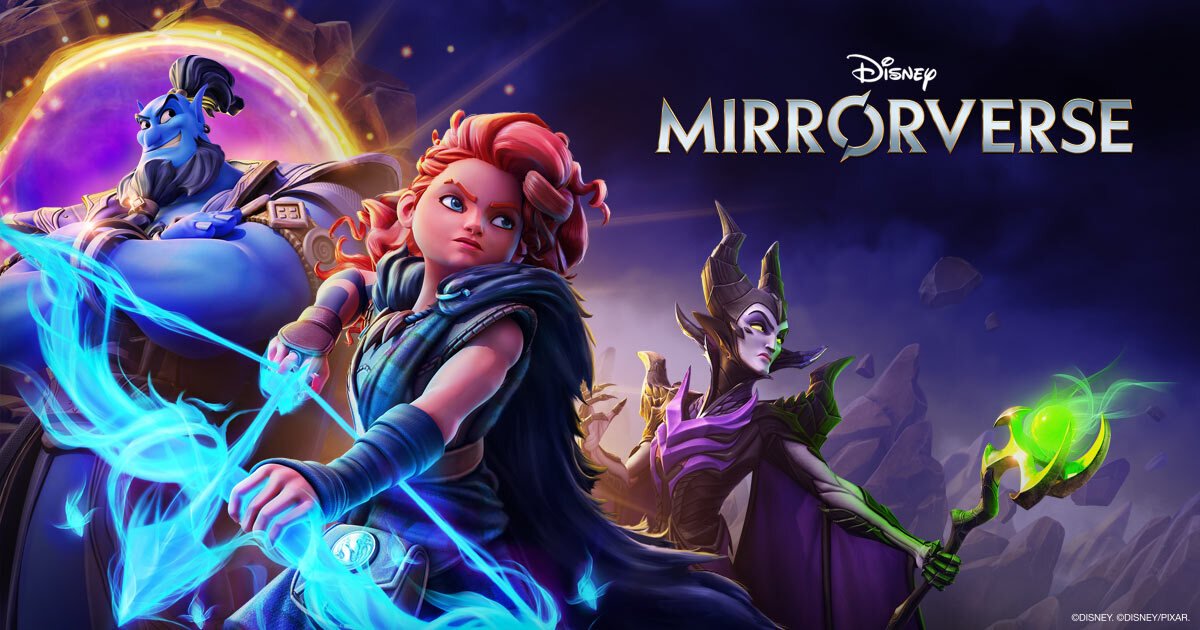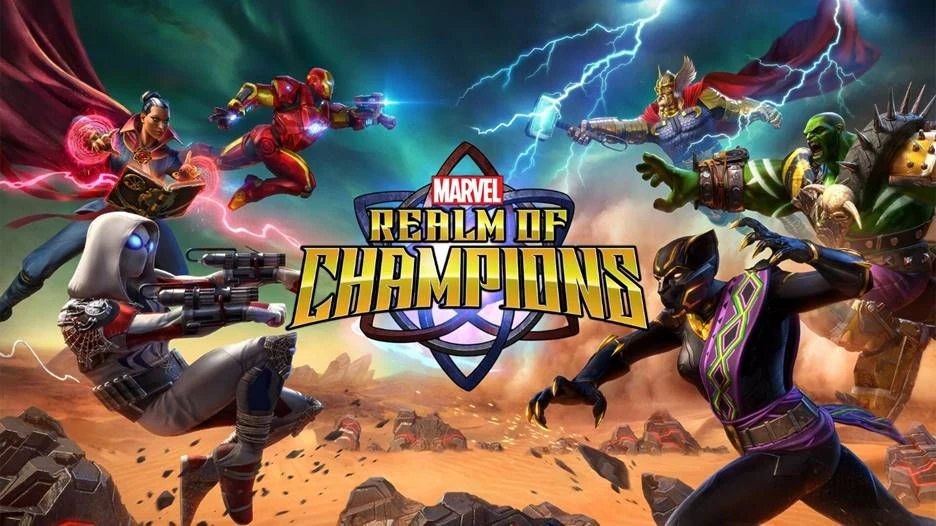PORTFOLIO
Disney Mirrorverse
Genre: Character Collector Action RPG
Platforms: Mobile
Role: RPG Designer II - Characters and Gameplay
Description:
Disney Mirrorverse is an Action RPG that takes beloved Disney characters and transforms them in to larger-than-life, battle-ready Guardians. Players assembled teams of three of these Guardians in order to face exciting combat challenges, helping Mickey Mouse in defense of the Stellar Mirror.
As a member of the Mirrorverse RPG Team, my main responsibility was taking characters from their initial ideation all the way through to their release. Working with a name as big as Disney meant that our character pipeline had to be quite robust to ensure that we were able to achieve our vision for these characters while also respecting the requirements of the original IP stakeholders. For RPG design, this included:
Conceptualization
Researching existing characters and demonstrating an understanding of what makes them beloved.
Writing creative transformations for these characters, explaining how they have changed to fit in to the Mirrorverse from personality to costume.
Upholding Disney expectations and collaborating to get a concept approved.
Communicating approved design to Art, Modelling, Rigging, Animation, and VFX stakeholders and ensured the design direction was maintained.
Paper Design
Establishing goals for the character in terms of power level, unique design space, role identity, and team composition based both of community sentiment and data analytics.
Collaborating with various design teams to ensure goals meet product needs.
Developing full character kits with clear mechanical loops that achieve stated goals.
Implementation
Using a proprietary scripting language to prototype character kits.
Running multiple rounds of play tests and iterations with various design groups to ensure kit meets stated goals.
Implementing and debugging the design, ensuring that beloved characters live up to their fans expectations while remaining balanced and tuned correctly.
Post-Launch Support
Communicating with Kabam’s content creator program to ensure they understand character intentions and have an opportunity to ask questions about designs.
Refining future characters through learnings from character analytics and retrospectives.
While on the team I had the opportunity to transform Dory, Cruella De Vil, Olaf, Sally, Frozone, and Elizabeth Swann. For my characters I always tried to find a new unexplored gameplay space for them to occupy which lead to some exciting experimentation! For example for Olaf I bent our existing area damager tech to allow him to create health pickup objects for his allies. Another example is Sally, who I was able to give a timed parry mechanic through creative use of our in-house spreadsheet scripting system. Here are some examples of community sentiment for some of my characters:
I also pitched, implemented, and play tested updated kits for live characters in order to bring them more in line with expectations after their release Including Minnie Mouse, Captain Hook, and Zurg.
As well as working on characters I also provided scripting for in-game events. I provided feedback, design support, and implemented buffs that modified encounters meant to exemplify new character abilities.
I also owned an initiative to overhaul our Common Effects Library, a set of VFX we used to communicate status effects on characters. When I joined the team these effects were overly generic and we were unable to communicate more compelling ideas such as complex boss fight mechanics. By working with the VFX Lead on Mirrorverse we were able to create visual identities for all of our unique status effects, allowing both our encounter and character designs to achieve new levels of complexity without sacrificing clarity.
Marvel: Realm Of Champions
Genre: PvP and PvE Arena Brawler
Platforms: Mobile
Role: Associate Gameplay Designer
Description:
The core conceit of Realm of Champions was that you were able to “make marvel yours”. Players competed in PVE and PVP challenges in concurrent online combat arenas to earn items they can equip to customize their characters abilities and appearance. Clans that represent different iconic marvel heroes compete in wargames to settle disputes in the fractured Battleworld.
My responsibility in this role was to translate paper designs for character kits from the RPG design team in to exciting and fair abilities in using a Move Editor in Unity. Abilities needed to feel powerful for players so they were excited to use them, while still communicating their effects clearly to both teams. This process required rapid prototyping and frequent playtests to ensure we nailed the feel of these characters. For example while working on the Hulk, we used camera closeups, screen shake, and quick snappy abilities help sell his brutal strength. On the other hand for storm’s abilities, we zoomed the camera out, had longer ability windups, and more flashy vfx to sell her identity as a battlefield control spellcaster.
While on this project I implemented abilities for two characters. First was a new weapon and ability set for the Hulk, the Wing Shield, which presented an interesting technical challenge. One of his abilities was a long range charge which required a lot of iteration to nail down the feeling for. I experimented for a while with swapping to a new control scheme which limited his turning radius while forcing him to move forward during the charge, but ultimately it didn’t feel great in our smaller arenas. Eventually through playtesting we landed on implementing the charge as a clearly telegraphed straight-line gap closer that felt extremely visceral to execute.
The second character I worked on was the Forest Guardian, who wound up being rather technically intricate. She used a system of elemental ammunition which required tracking four different bullet types and ensuring that their unique effects were all communicated clearly. I worked closely with the VFX team and together we were able to craft a character that was very positively received by the player base.
While working in this role I was also responsible for managing and implementing the audio requirements for our new characters. This meant making clear requests for our external vendor in Europe and concisely communicating feedback for any iterations required.
The Walking Dead: Road To Survival
Genre: Character Collector Turn Based RPG
Platforms: Mobile
Role: Associate Game Designer
Description:
The Walking Dead: Road To Survival was already an elder product by the time I joined the team, and it already had its pipelines well established. The game centers around collecting both popular and brand new characters, created in the style of the original comic books. Players assemble teams of five characters to face hoards of zombies and other survivors. There is a long narrative campaign that still receives regular updates, as well as a competitive PVP Clan War mode.
As an associate game designer at IUGO I was responsible for operating the data authoring pipeline for new characters and items for each new update to the game. We received paper designs for new characters from the product owner Scopely and it was my responsibility to implement characters and their kits into the game. I also created the data for all new live ops items, progression materials, and offers, as well as running the localization pipeline for all new strings.
In this role I also managed an offsite testing team which included writing test plans for new features in test rail, delegating tasks, and tracking burn down in Jira.
Gears 5 (Escape Mode)
Genre: Cover Based Shooter
Platforms: PC, Xbox One, Xbox Series X/S
Role: Quality Assurance Analyst
Description:
In this role I was testing a brand new game mode for the Gears of War franchise called Escape. This was a cooperative mode for up to 3 people. In this mode players were tasked with escaping an enemy stronghold while toxic gas slowly filled up the rooms behind them as they pushed for the exit. Maps for this mode were built using modular chunks that were also used for the games Map Builder feature.
In this role I was part of a small strike team that exclusively tested this mode. My proclivity towards more technical roles meant that I was quickly given the responsibility for testing the unique AI behavior this mode required. In most Gears of War modes, the AI is designed to always push towards the player so they have the experience of holding out against overwhelming odds. However in Escape the enemy instead needed to focus on holding positions, this forces players to instead push against them to outpace the toxic gas slowly filling up the hive behind them. This was a unique challenge and great learning opportunity, since it required developing a relatively deep understanding of existing AI behavior, as well as working closely with the engineering team to understand how the behavior should change.
I was also responsible for running playtests of the mode for other dev team members as well as external testers. During these sessions I would collect their feedback, collate it, and share it with the Escape development team. I also frequently represented the Escape team as backup-POC for other internal meetings and playtests.



























